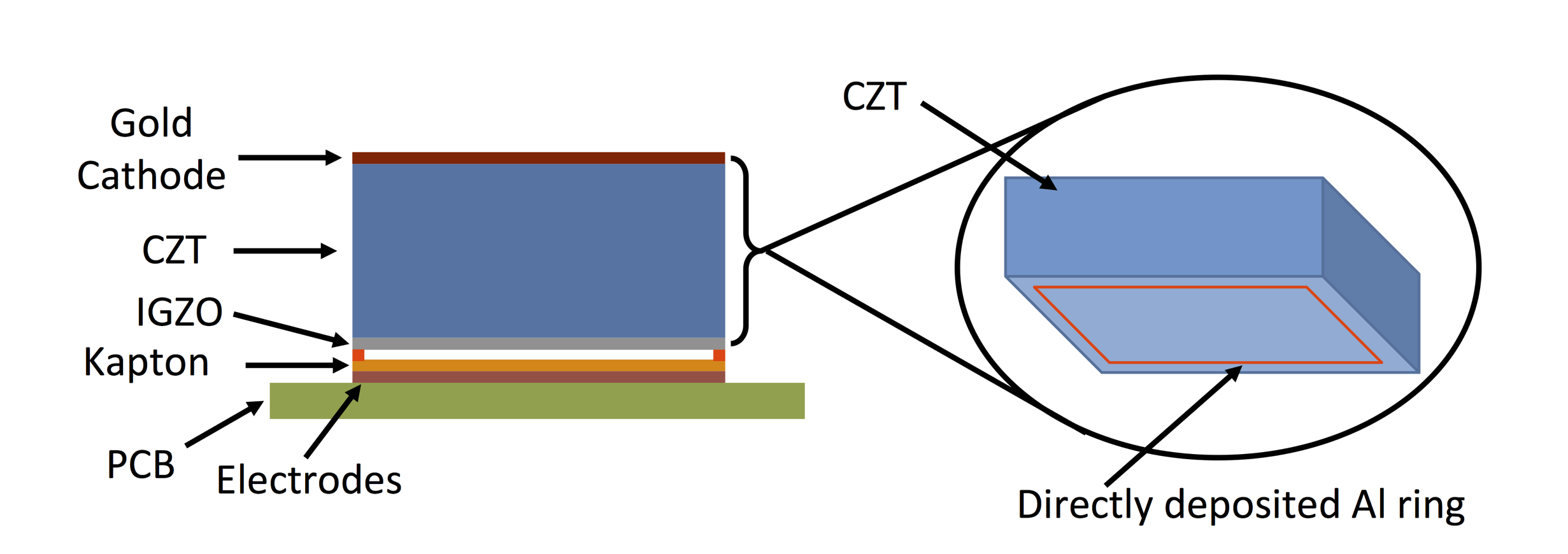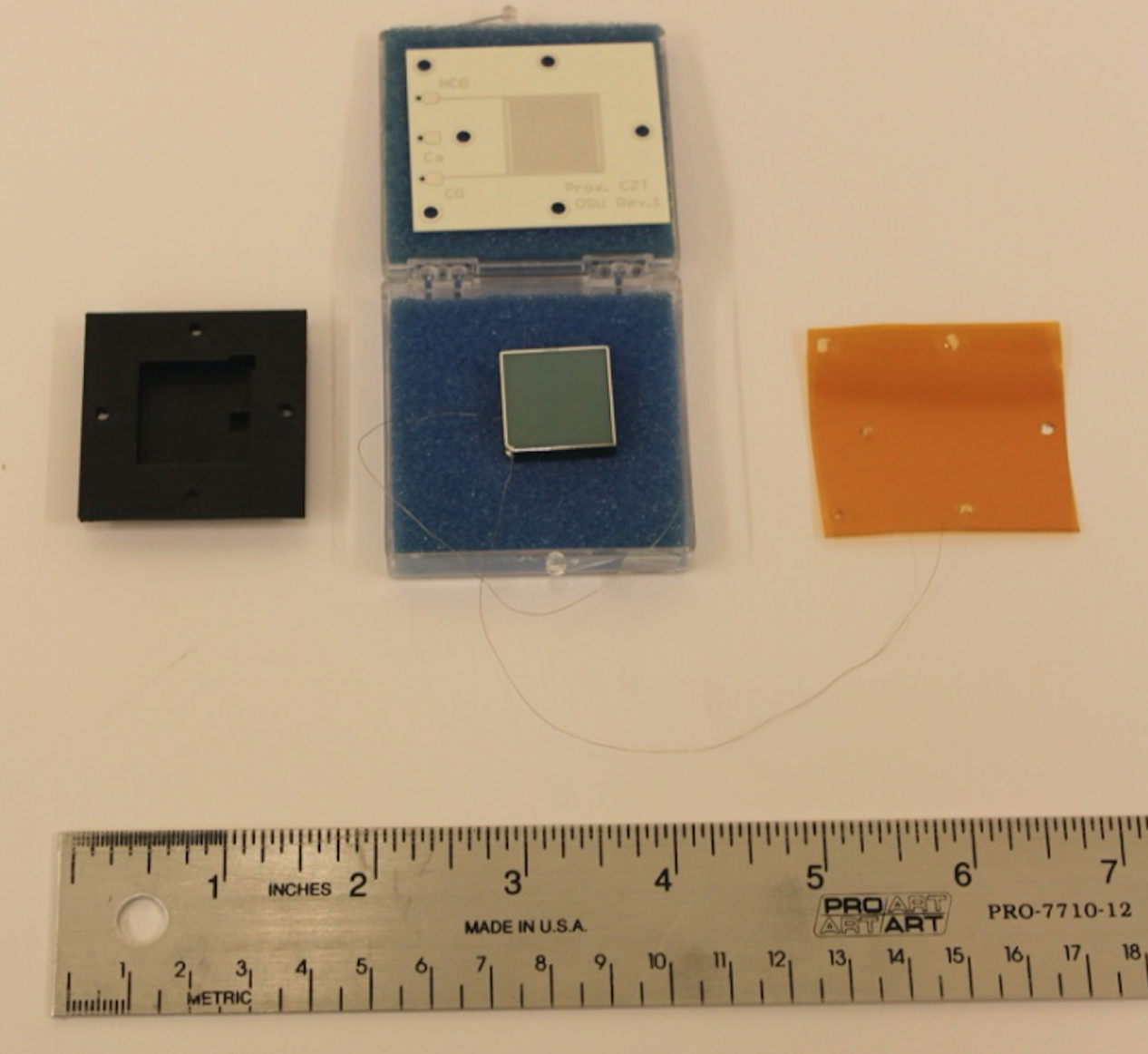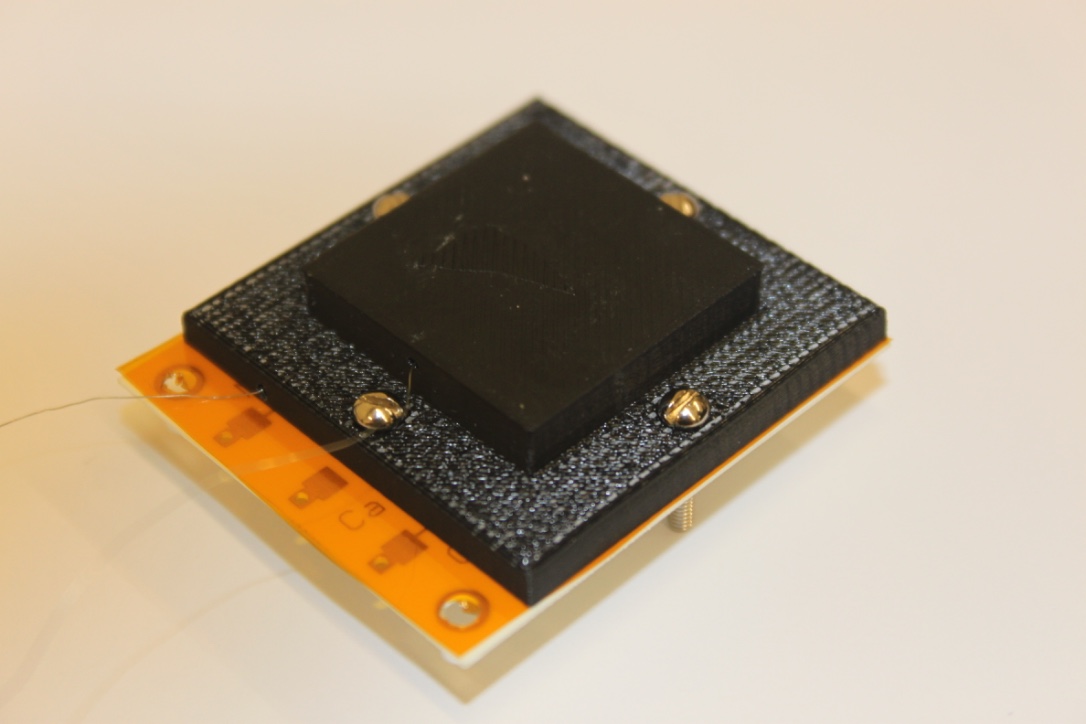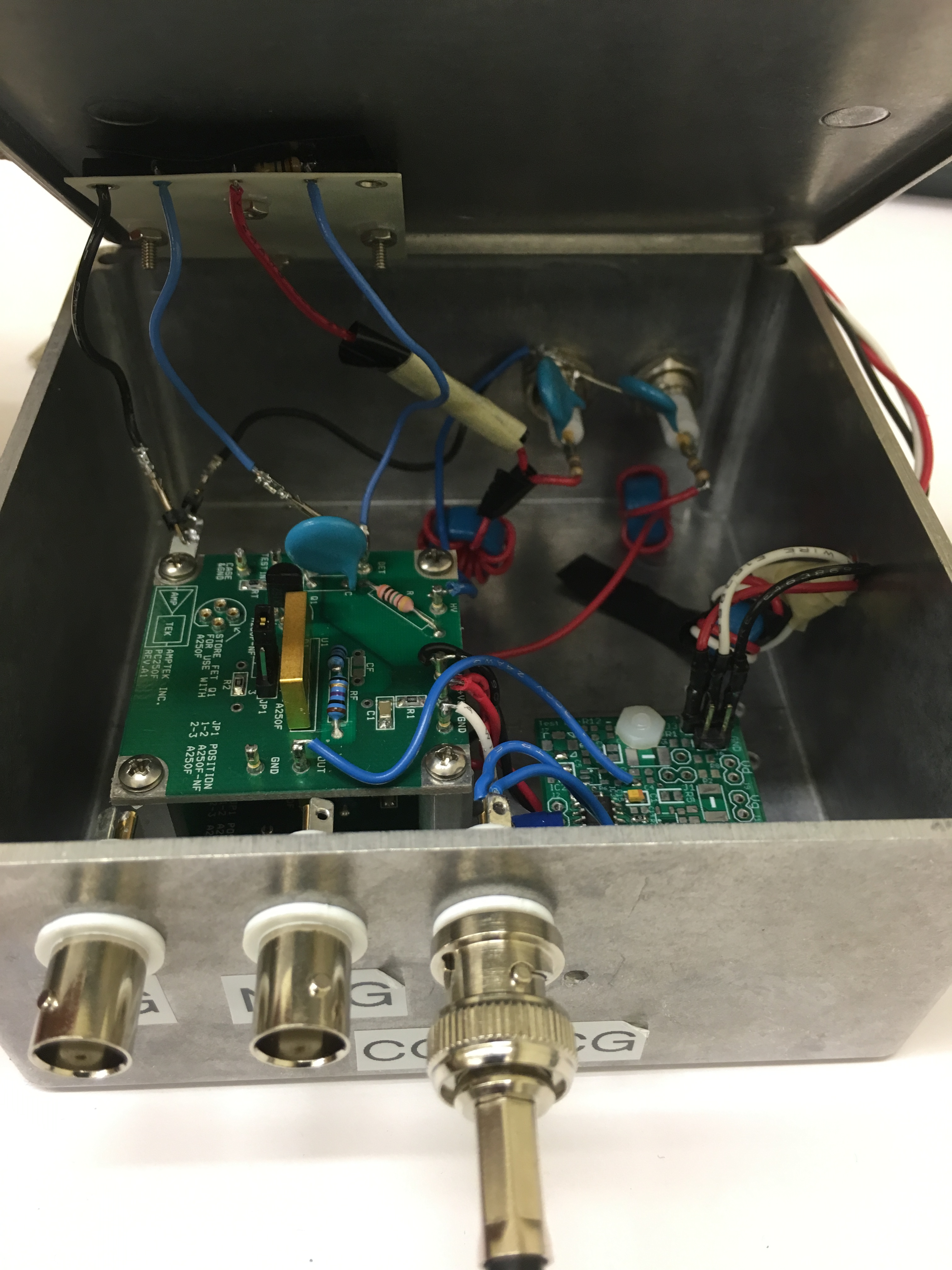Proximity charge sensing is a relatively new technique for semiconductor radiation detectors that has a few distinct advantages over directly-deposited electrodes. The first advantage is that it eliminates the need to deposit electrodes on the semiconductor crystal, which can simplify the fabrication process and reduces the over all cost of the detector. Second, proximity charge sensing reduces the leakage current associated with directly depositing the electrodes on the semiconductor surface. Finally, in position sensitive systems, it can be used to improve the position sensitivity of the device via signal interpolation. The advantages of using proximity electrodes have been previously demonstrated by their implementation in Ge and Si-based detectors. Though the energy resolution of HPGe detectors has not yet been surpassed, room-temperature semiconductors such as CZT offer a significant advantage over HPGe since they do not require expensive, high-maintenance cooling systems.
The research being done at Oregon State University explores the use of proximity charge-sensing on CZT crystals. It includes simulations to calculate the weighting potentials and electric fields for different coplanar electrode designs and fabricate proximity electrodes on compound semiconductors, such as: (1) a high resistivity contact to be applied on the proximity surface (anode side) that should not affect the induced charge generated from radiation interaction and should not trap charges at the detector surface, (2) a proper metal to serve as an Ohmic contact to dissipate charges accumulated on the crystal surface, (3) dielectric material to isolate the detector from the electrodes, and (4) proximity-electrodes that are implemented in this research on a PCB (Rogers 4350). The weighting potentials of proximity-sensing electrodes and directly-deposited electrodes are generated using ANSYS Maxwell and quantitatively compared using a Figure of Merit (FOM), which compares the designs in terms of uniformity and similarity of the generated weighting potential. The most promising proximity-sensing electrode design is currently being fabricated and characterized using a (19.4 mm x 19.4 mm x 5 mm) CZT crystal, and its performance is being compared to directly-deposited electrodes.




